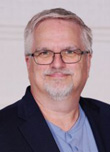When A Rare Disease Partnership Evolves Into A Global Effort
By Ken Kahtava, FSHD Society, and Mel Hayes, Fulcrum Therapeutics

Collaboration is a driving force for innovation in healthcare. That we know. But what does it look like in action? Consider the partnership between the FSHD Society and Fulcrum Therapeutics. Marked by a gradual evolution from small, meeting-oriented work to a transformative initiative, our partnership in rare disease research exemplifies the power of trust and shared commitment, and hopefully serves an example that can be adopted by other clinical research professionals in rare disease, as well as other therapeutic areas.
Two Efforts Fighting The Same Disease
Like over 90% of rare diseases, Facioscapulohumeral Muscular Dystrophy (FSHD) has no FDA approved therapy. FSHD is a rare, progressive, and debilitating disease impacting between 16,000–38,000 people in the U.S. and an estimated 870,000 people worldwide. The condition is characterized by muscular atrophy involving primarily the face, scapula and shoulders, upper arms, legs, and abdomen. Patients experience relentless and accumulating muscle and functional loss. The ability to perform basic daily activities is impacted due to loss of upper limb function, loss of mobility, and chronic pain, and many patients ultimately become dependent on the use of a wheelchair.
However, teams at organizations such as the FSHD Society and Fulcrum Therapeutics are working to change that. Founded over 30 years ago, the FSHD Society aims to speed the delivery of effective treatments and a cure for FSHD, while ensuring those impacted have what they need to live their best life. Fulcrum Therapeutics, a Cambridge-based biotech founded in the last decade, had its focus on FSHD from the very start. Fulcrum’s drug candidate losmapimod, a small molecule potential disease modifying therapy that reduces the expression of the DUX4 gene, is fast-tracked by the FDA and in Fall 2023 completed the first-ever Phase 3 enrollment in FSHD — an important milestone for the community.
A Patient-Centric, Results-Oriented Relationship Developed Over Time
Representatives from the two organizations, including FSHD Society founder and patient, Dan Perez, first met at the World Orphan Drug Congress in 2014. Following their introduction at the Congress, both decided to meet face-to-face at Fulcrum’s office in Cambridge, Massachusetts, where they had the opportunity to discuss key clinicians and research centers, cellular and animal models, and patient engagement. These early interactions solidified their shared commitment to improving the lives of people with FSHD.
Central to this partnership was an unwavering focus on patients. Over the next two years, Fulcrum and The FSHD Society worked together to organize patient focus groups to better understand the needs and expectations of FSHD patients on future therapies and their potential benefits. Beyond focus groups, both organizations engaged at events such as FSHD Patient Connect and the FSHD New England chapter meetings, ensuring that the patient’s voice remained central at all times.
Then, in 2016, the FSHD Society and Fulcrum recognized that without a biobank, moving clinical research toward a treatment would be a challenge. So, the organizations worked together to acquire muscle tissue during an FSHD patient’s planned surgical procedure. The patient reached out to the FSHD Society prior to scapular stabilization surgery, motivated to contribute to research that could one day help her affected son. The tissue was used to develop assays that resulted in the identification of lead candidates for therapeutic development.
In many disease categories, but especially in rare disease, putting patients in the center of research design and decision-making yields better results for all. In 2019, when Fulcrum initiated the development of a patient advisory board, the Society recommended specific individuals to serve on the advisory board, selected to represent diverse ages, disease severity, and ethnicities. This step not only empowered patients but also ensured that their perspectives were considered in developing meaningful clinical trial endpoints.
In the spirit of transparent and proactive communication, Fulcrum regularly collaborates with the FSHD Society on press releases and other FSHD community-related announcements to ensure the community has clear, timely, and accurate information. Because the Society works closely with Fulcrum, it can think in advance and proactively prepare a communications plan and be able to comment about what the news means for patients. In 2021, Fulcrum coordinated the release of their Phase 2 trial results to take place at the FSHD Society’s International Research Congress, the premiere global conference exclusively focused on FSHD research. During the conference, the Society facilitated the dissemination of trial results to both the research community and directly to the patient community through a webinar.
Bringing Collaboration to the Rest Of The World With Project Mercury
On World FSHD Day 2023, The FSHD Society and Fulcrum Therapeutics announced the launch of Project Mercury, a first-of-its-kind collaboration of global stakeholders committed to identifying and addressing the challenges that could impede the delivery of new medicines for this devastating condition.
The initiative is a collaboration of the world’s leading FSHD clinicians, researchers, experts in access and clinical trial management, diverse organization including FSHD Society, FSHD Canada Foundation, FSHD Europe, FSHD Global in Australia, FSHD UK, and other FSHD and neuromuscular advocacy organizations, TREAT-NMD in England, Fulcrum Therapeutics and Avidity Biosciences. These individuals and organization are dedicating their time, energy, expertise, and, in some cases, funding. Together, they aim to accelerate progress in understanding and treating FSHD by:
Solving for clinical trial readiness: In any rare disease, biopharma companies must be concerned about not recruiting enough patients to enroll in trials and/or not having enough research sites to conduct trials. Project Mercury is addressing this by building a global cohort of 10,000 clinical trial-ready, well-characterized patients for participation in clinical trials and organizing them in FSHD patient registries across the world.
Improving access: Acknowledging the barriers faced by FSHD patients, Project Mercury is dedicated to ensuring that patients have prompt and equitable access to care and medicines.
Purposeful design and collaborative global efforts: Project Mercury has a meticulously crafted organizational structure, operating under the guidance of a global task force and local working groups, ensuring alignment with the mission. The FSHD Society provides project management and business development support. In this way, the Project Mercury initiative can operate like an organization with focus, accountability, and ambitious objectives. Additionally, the collaborative platform enables stakeholders to share, learn, and implement together. Collaboration and focused alignment of objectives and workplans takes place at the global level through a Global Task Force and at the local level, through Country Working Groups. The Task Force and the Working Groups are all led by patient advocacy organizations. This global-local approach ensures customization of Project Mercury’s work at the local level, sharing resources at the global level and eliminates duplication of efforts, saving time and money.
Looking ahead, the Project Mercury Task Force identified these primary goals for 2024:
- Creating patient education content templates for country working groups to customize and deploy.
- Developing a more robust FSHD registry digital dataset to ensure quality and standards in patient registry data collection.
- Creating a web-accessible hub for clinical trial sites to access best-practices tools for conducting FSHD trials.
- Creating and publishing an FSHD disease progression model.
- Performing and publishing FSHD economic/cost model studies in Canada, the U.S., and the United Kingdom.
- Creating access strategies in Australia and Brazil.
- Performing and publishing a review of FSHD HR-QoL measures.
- Building the capacity of patient advocacy organizations in North America, Europe, Australia, and Brazil to enable high levels of patient engagement and support for Project Mercury work.
- Establishing public-private partnerships to continue to resource Project Mercury.
Trust and Collaboration Equal Impact
An evolving relationship between organizations, built on trust and collaboration, serves as an example of what can be achieved when a shared commitment to patients drives collaboration. It is important to understand that the strength of the relationship lies not only in shared goals but also in the dedication of those involved. The impact of joint efforts goes beyond research and treatment — it exemplifies a model for building a brighter and more patient-centric future for all. In the world of rare diseases, where patients often feel overlooked, this collaboration stands as a testament to the power of coming together with a shared purpose—improving lives, one partnership at a time.
Sidebar: Quick Tips for Successful Rare Disease Collaboration
- Keep the patient at the center of everything, and re-check this at every milestone.
- Establish shared goals, common understandings, and agreements about problems and potential solutions.
- Have in-person conversations/meetings to establish relationships.
- Create a place at the table for all stakeholders.
- Design programs purposefully with clear roles, the right expertise, effective project management, and high-quality outputs in mind.
- Remain adaptable to new ideas and opportunities.
- Utilize or build the right tools needed to advance the cause. (For example, create a patient registry if trial recruitment concerns exist.)
- Put conflict management strategies in place in case issues arise.
- Build on successes progressively over time for long-term gains.
- Put in place internal structures for efficient evaluation and decision making for partnership opportunities (In other words, have a culture of getting things done.)
About The Authors:
 Ken Kahtava is chief business officer for the FSHD Society and leads their business development and strategic partnerships around the world (and fills this same role in support of Project Mercury). Ken has held senior leadership roles in research-focused advocacy organizations and other private industries for more than thirty years. His consulting work with rare disease biopharma companies in their engagement with research-focused advocacy organizations has led to the acceleration of treatments for previously unmet medical needs. As a business owner and entrepreneur, he has architected digital and mobile health information-technology applications designed to improve patient education and participation in clinical research and clinician-patient interaction at point of care.
Ken Kahtava is chief business officer for the FSHD Society and leads their business development and strategic partnerships around the world (and fills this same role in support of Project Mercury). Ken has held senior leadership roles in research-focused advocacy organizations and other private industries for more than thirty years. His consulting work with rare disease biopharma companies in their engagement with research-focused advocacy organizations has led to the acceleration of treatments for previously unmet medical needs. As a business owner and entrepreneur, he has architected digital and mobile health information-technology applications designed to improve patient education and participation in clinical research and clinician-patient interaction at point of care.
 Mel Hayes is responsible for Fulcrum’s enterprise strategy, which aligns the intersection of patient advocacy, engagement, policy, and corporate communications to support the pipeline in both FSHD and SCD. Mel brings more than 30 years of experience in asset development and management of commercialization strategies in a range of therapeutic areas including many rare, specialty and primary care diseases. Prior to Fulcrum, Mel served as global head commercial, vice president, rare blood disorders at Sanofi-Genzyme, where he led the commercial organization for hemophilia and complement assets. His previous roles also include U.S. vice president, hemophilia and global head, hematology rare blood disorders at Bioverativ (acquired by Sanofi-Genzyme) and global vice president, head of global marketing and launch excellence at shire and global vice president, hemophilia at Baxalta (Shire). Previously, he worked at Bayer and Bristol Myers Squibb.
Mel Hayes is responsible for Fulcrum’s enterprise strategy, which aligns the intersection of patient advocacy, engagement, policy, and corporate communications to support the pipeline in both FSHD and SCD. Mel brings more than 30 years of experience in asset development and management of commercialization strategies in a range of therapeutic areas including many rare, specialty and primary care diseases. Prior to Fulcrum, Mel served as global head commercial, vice president, rare blood disorders at Sanofi-Genzyme, where he led the commercial organization for hemophilia and complement assets. His previous roles also include U.S. vice president, hemophilia and global head, hematology rare blood disorders at Bioverativ (acquired by Sanofi-Genzyme) and global vice president, head of global marketing and launch excellence at shire and global vice president, hemophilia at Baxalta (Shire). Previously, he worked at Bayer and Bristol Myers Squibb.
